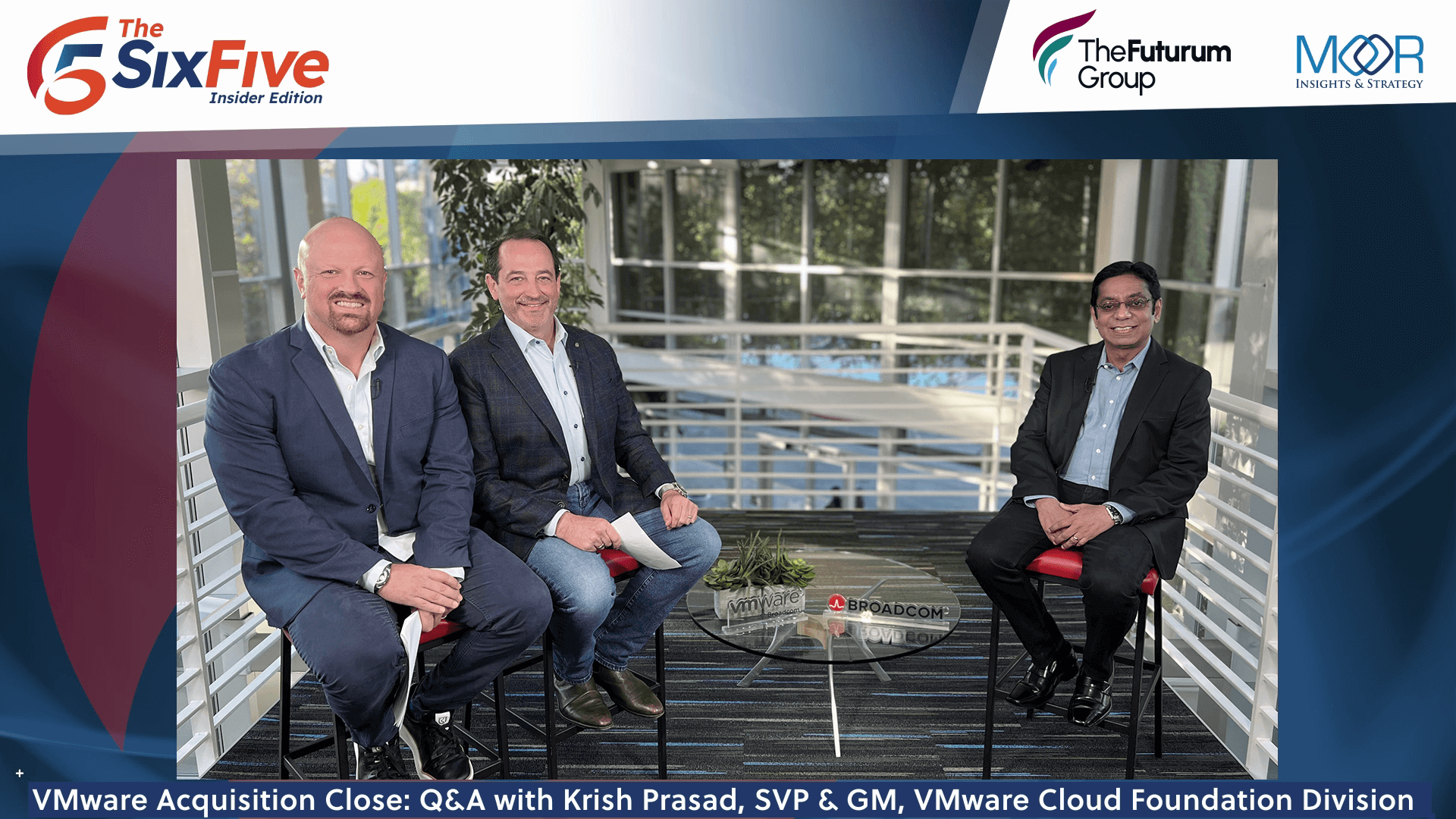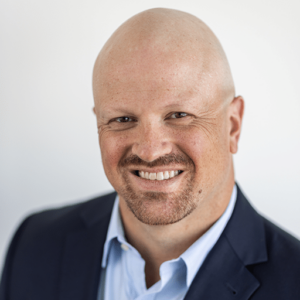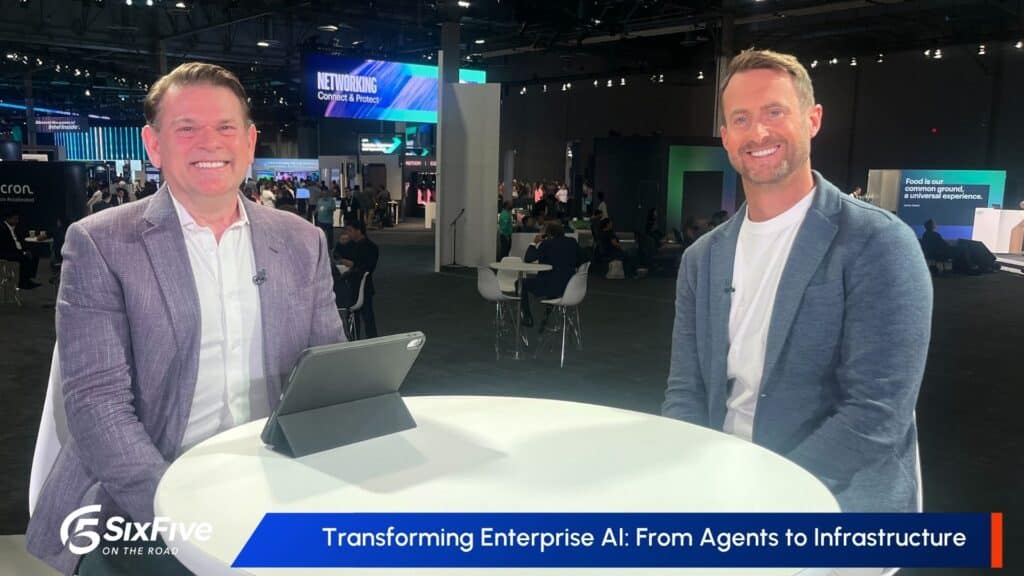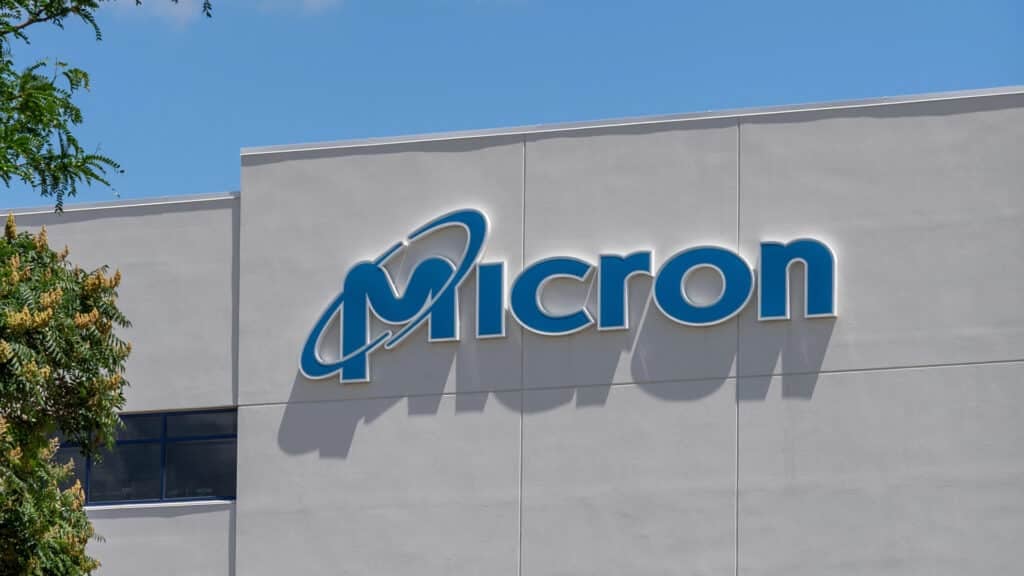On this episode of The Six Five – Insider Edition, hosts Daniel Newman and Patrick Moorhead welcome Broadcom’s Krish Prasad, SVP & GM, VMware Cloud Foundation Division, for an inside look at how VMware Cloud Foundation fits into Broadcom’s larger strategy of delivering private and hybrid cloud choices and options for customers.
Their discussion covers:
- Broadcom’s strategy of delivering private and hybrid cloud choices and options for customers
- Broadcom’s priorities around data management, security, and networking and how they fit in with customers’ desire for interoperability and control of their data and workloads
- What customers of a combined Broadcom and VMware can expect around security solutions for software-enabled technologies, and what innovations are coming
- What customer needs VMware Cloud Foundation is addressing and how has that impacted or shifted innovation of the platform
- How VMware Cloud Foundation is adapting to support AI and generative AI workloads and what role VMware Cloud Foundation will play in support of Private AI architecture
Be sure to subscribe to The Six Five Webcast, so you never miss an episode.
You can watch the full video here:
Or Listen to the full audio here:
Disclaimer: The Six Five webcast is for information and entertainment purposes only. Over the course of this webcast, we may talk about companies that are publicly traded, and we may even reference that fact and their equity share price, but please do not take anything that we say as a recommendation about what you should do with your investment dollars. We are not investment advisors, and we ask that you do not treat us as such.
Transcript:
Patrick Moorhead: The Six Five is live at Broadcom headquarters in San Jose, California. It is deal close day between Broadcom and VMware, super exciting day Daniel. I mean this is a historic day, huge deal impacting so many different constituents out there and The Six Five has been all the way along for the ride.
Daniel Newman: Yeah, we’ve been chronicling it, $60-plus billion deal, bringing together a leader in hardware, a leader in software to create the future and here we have some of the leaders current. We’ve talked to CEO and President Hock Tan, but we’re going to talk to a number of the different leaders about where they see this going. The vision, of course, we’re going to ask the hard questions as well as try to get inside what’s going on so that everyone out there understands a little more what this deal means.
Patrick Moorhead: Yeah. So Dan, both of our analyst companies have been huge believers in the hybrid multicloud, and you know I love to take victory laps about something that I talked about 10 years ago, and that is that the hybrid multicloud is real and that cloud workloads would be run everywhere, on premises, in the public cloud, on the edge, multiple types of clouds. And there’s not been a Fortune 500 CIO that isn’t running multiple applications across multiple clouds. So it’d be a great time to bring in our guest. Krish runs VMware Cloud Foundation. Welcome to The Six Five, first time on the show. Thank you.
Krish Prasad: Thank you, Pat. Thank you Dan. I’m glad to be here.
Daniel Newman: Good to be here. Congratulations on the big day.
Krish Prasad: Yeah. First of all, I have to say I’m very excited to be here to start this new chapter in VMware’s journey with Broadcom. I have to say over the past year or so, I’ve been working very closely with Hock and team in planning out the integration of the two companies. And one of the things that really impressed me is the amount of time that Hock spent with the VMware customers listening to their requirements and concerns. And as you heard today, as a result of all those conversations, he has decided to double down on VMware’s hybrid cloud strategy, if anything with more focus and additional investment.
Patrick Moorhead: If you don’t mind me adding, that’s exactly what he said in the run-up to the deal close. And it’s exactly what y’all are doing, and I really appreciated all the openness too, all the things that were put in public record on things that were going to happen around the public cloud. So sorry to interrupt my friend.
Daniel Newman: No, look, this deal, we talked a lot to Hock about how complicated it is, but it’s done. And so here you are, you’re the GM of VMware’s Cloud Foundation and we’ve been listening to him talk about how Broadcom has this vision of enabling companies to accelerate their private and hybrid cloud strategies. Talk a little bit about the role that your group, that you are leading. What role is it expecting to play in enabling Hock to realize this vision?
Krish Prasad: The VCF division is responsible for delivering our hybrid cloud infrastructure software. And customers can take that software, modernize their infrastructure by deploying it on premise. They can deploy a private cloud, have a cloud operating model, they can also consume it as a managed service. So think of it as a VCF asset service from a variety of our partners. We have a large ecosystem of partners including the hyperscalers. So combining the on-prem deployment with VCF, with VCF running as a service, bringing it together into a hybrid cloud model, that’s what our customers really love. And customers not only look to us for resiliency of the infrastructure, security of the infrastructure, but more importantly they’re looking for cloud agility, which means the ability to move their workloads around the different locations, whether it is public cloud, on-prem, you can move your workloads based on your needs, whether you want to move it to the public cloud or even back on-prem as you need it.
Patrick Moorhead: Yeah, enterprises are looking for a common way to deploy applications, do networking secure that data, and as we saw, at EXPLORE data management. I asked Hock a little bit about NSX+ that you announced at EXPLORE, but can you talk a little bit more how does NSX fit into the future of the portfolio and delivering hybrid multi-cloud value?
Krish Prasad: Yeah, let’s maybe take a step back and look at what customers are doing. Customers are going through digital transformation in the enterprise, and as a result of this, there is a huge explosion in the number and types of applications that are being developed. And most of these new generation of applications are data-intensive and also the applications are becoming more distributed. Customers want to take the applications and run either the whole application or parts of the application closer to where the data is being generated. And in many cases, maybe even closer to their end users. So the perimeter of the data center that used to be well-defined in the past is now getting a lot more diffused because the applications are getting pushed out to the public cloud, to the edge, and the data center. And so our solution provides a very unique set of capabilities with the same platform running in all these locations, tying it all together with NSX, providing the connectivity and also the security. NSX has this capability where you can set policies for securing your environment, but you can set it once and then it makes sure that all the endpoints are secured the same way. So that’s exactly what we announced as NSX+ in the Vegas EXPLORE event.
Patrick Moorhead: Today companies literally have a separate networking team for each of their clouds, which is not efficient, doesn’t make sense. And in some ways because you’re stringing together different types of security, potentially even insecure.
Krish Prasad: Yeah, that’s the beauty of the software defined networking with NSX that ties it all together with one common foundation.
Daniel Newman: So it’s really interesting with the combined Broadcom-VMware, you really do have leaders across hardware and software and of course this full stack requires both.
And security has probably become one of the preeminent discussion points for enterprises around the globe. As AI has become the trend, the ability to make sure data is protected, to make sure that it’s resilient, to make sure it’s sovereign, all those things are big considerations. And of course Broadcom is promising to lean in and create a more secure set of capabilities.
And for your business for VCF, I’m genuinely curious on the security innovation, how does being Broadcom and VMware drive your strategy as leading VCF and drive your innovation for security within the platform?
Krish Prasad: There is no question that security is important to our customers and we’ll continue to invest and innovate around security. And I’ll give you maybe two things to think about in the area of security. The first thing is about early detection and prevention, and the second bucket is around rapid recovery.
Patrick Moorhead: So perimeter based versus once they’re in, what do I do?
Krish Prasad: Exactly. So in both areas we are going to innovate. On the first one as an example, the threat actors come into your infrastructure, they actually lay in wait, they move around, they get themselves set up, then they do the malicious attack. And with our NSX technology, we are able to detect these malicious behaviors ahead of the action that they take. So we are able to detect, isolate, and neutralize these things with the NSX technology; that’s on the detect and prevent side. Then we have a new solution that we announced a year ago around ransomware recovery. And this is a very highly differentiated solution with the hybrid cloud underpinning that customers love. And what we do with that is because of the hybrid cloud enablement that we have, we actually bring up a isolated environment in the cloud that is separate from the potentially infected infrastructure that the customer might have. And we also detect which version of their application is pristine and we are able to bring that up very quickly while the customer is working on cleaning up their environment; in a very isolated cloud deployment you can bring up and get the apps running as quickly as possible.
Patrick Moorhead: That’s smart. And it is amazing how on fire the data management business is today. I mean, whether it’s hacking as a service or nation state budgets now, it’s just incredible to see. And quite frankly, when you have more workloads working in more places, basically your threat matrix goes up.
Krish Prasad: Correct. And then that’s why the combination of our vSAN technology, which is all around virtualized storage plus new data management services that we have been announcing here in the past few months, the combination of the two really focuses on being able to protect the data but also deal with immense amounts of data that is being generated by these applications. And then the NSX technology, providing the perimeter security is what makes the whole thing work.
Patrick Moorhead: Krish, I’d like to pivot to, I’ll call this roadmap strategy. I’m not going to ask you your exact roadmap.
Daniel Newman: Oh, come on.
Patrick Moorhead: Well, we could if you’d like to share with us, but I’m not even going to ask. But you now have the combined assets of Broadcom and VMware that cross a lot of software and a lot of hardware, and looking forward at future challenges that you think your customers might have, what is going to be your approach? What’s going to be your strategy for what you’re going to work on with this combined entity?
Krish Prasad: So if you look at our mission for the VCF division, our mission is to enable our customers to deploy a hybrid cloud computing infrastructure using our software. So if you look at the challenges they have, our innovation is going to focus in three areas. Number one, it’s about making it easy for customers to deploy and run the hybrid cloud. And you’ll see continued investment and focus on making it simpler for customers to deploy the software, easy to manage and easy to lifecycle. The second piece is around consumption of the infrastructure; make it really easy for developers to consume the infrastructure when they develop the applications. And so our platform is pretty unique in the sense that from a single platform, we are able to support VMs and containers orchestrated with Kubernetes. And that’s the area that developers are looking for, Kubernetes based consumption, whether it’s the development teams or the DevOps teams. The third area is to continue to enhance our compute platform, vSphere, which is at the core of VCF, to support the new types of applications. Applications are pushing the boundary on latency, real time applications. Applications are dealing with a lot of data intensive processing. So we are continuing to push to keep our platform current so that customers can develop their new generation of applications on it.
Daniel Newman: Krish, Hock was very excited about VCF, I think he mentioned it several times in our conversation and exactly that sort of full stack and how it’s going to enable customers to get the benefit from their infrastructure and their applications regardless of location, destination, he really leaned into that heavily. Pat, I have to say I’m somewhat shocked that we’ve had a conversation though that has gone this long and we haven’t talked about AI.
Patrick Moorhead: I know.
Daniel Newman: I did start to hear little bite-sized pieces of it. We mentioned data management, data scale, which again, really to benefit from AI, it’s all about the ability to take advantage of massive data states. And of course data’s everywhere and multi-cloud and what you’re doing at VMware plays a big role. But I think the people out there, and I know I was impressed with what you showed at VMware EXPLORE in Las Vegas, the path. And of course now that you’ve made this deal and everything is subject to maybe little nips and tucks, can you talk a little bit about what you see and the role of VCF, the plans for AI as you see them, and what customers can expect in terms of the opportunities with AI and VMware?
Krish Prasad: So we announced this private AI foundation in Vegas, and I think, let me just talk a little bit about what private means. People sometimes confuse it with private cloud. Private in the context of AI that we announce is all about the privacy of your data, keeping your data private and secure. Because the last thing customers want is to take their intellectual property, the data that they have, and take it out and really train a public model, making that data and the intellectual property-
Patrick Moorhead: They have all that access to their competitors.
Krish Prasad: Their competitors, so for customers it’s very important to keep it private. And so that’s our focus, is to really enable them to keep their data private and allow them to run AI processing closer to where their data is, not to take the data somewhere else. And so that’s where our hybrid cloud strategy, if you think about it, plays well into it. VCF, you can run it on-prem or you can run it anywhere in the public cloud or in a service provider cloud. And VCF is optimized now for running AI workloads. So we had this big announcement, you saw Jensen on the stage in the EXPLORE, and it was the culmination of around two years of engineering work between the two companies. And we announced some fantastic results in terms of the performance of our stack running AI workloads enabled with their GPUs. And so you’ll continue to see us innovate along those lines, more partners coming to the ecosystem with us on top of VCF. So we’ll be very focused on innovating around AI.
Patrick Moorhead: One thing that I really appreciated about what you brought out as EXPLORE, about how you talked about the different parts of data that have to come together. And quite frankly, I think the industry was missing it up to this point. I remember distinctly you had a slide that showed ERP data, SCM, CX, legal, I think your chief legal officer got on stage-
Krish Prasad: Exactly, exactly.
Patrick Moorhead: … product IP, and while all customers might not be thinking exactly that today, it’s 100% the future. And they’re certainly not going to load all of this data that’s been on-prem for 50 years and just start loading it up. And historically speaking, and if I look at the last 40 years, typically given that you can manage this data and what’s going on, that processing does happen as close to where that data is created as possible. So I really did appreciate it, and I can’t wait until it goes GA and enterprises can crank out and add it value.
Krish Prasad: The customers are already deploying our early versions of it. And you’re exactly right, I think one of the key examples that we as a software company we have is the coding piece of it, where we don’t want to take our software and take it public. We want to keep it proprietary. And so we want to run it on-prem on our stack. And we did that and we found huge TCO improvements by doing just that.
Daniel Newman: All right, Krish, I want to just thank you for spending some time with us. I think this conversation is in its early days. And how this is going to evolve is going to be something, well, you and I are going to be accountable to be covering for some time here. But it’s great that you covered the gamut from kind of core compute all the way through security and into AI Krish, and we want to wish you the best in this endeavor. Congratulations on getting this to fruition and congratulations on the role leading VCF. Let’s have you back again soon.
Krish Prasad: Yeah, excited to be here and thank you for doing this.
Patrick Moorhead: Thanks.
Krish Prasad: Thank you.
Daniel Newman: All right everyone, we’re here at Broadcom headquarters and it is deal day, and we want to thank you all for tuning in. Check out all the episodes of deal day coverage for The Six Five. We provide the analysis and the insights that you need to know about this deal. But for this episode, it’s time for both Patrick and I to say goodbye. We’ll see you all really soon.
Author Information
Daniel is the CEO of The Futurum Group. Living his life at the intersection of people and technology, Daniel works with the world’s largest technology brands exploring Digital Transformation and how it is influencing the enterprise.
From the leading edge of AI to global technology policy, Daniel makes the connections between business, people and tech that are required for companies to benefit most from their technology investments. Daniel is a top 5 globally ranked industry analyst and his ideas are regularly cited or shared in television appearances by CNBC, Bloomberg, Wall Street Journal and hundreds of other sites around the world.
A 7x Best-Selling Author including his most recent book “Human/Machine.” Daniel is also a Forbes and MarketWatch (Dow Jones) contributor.
An MBA and Former Graduate Adjunct Faculty, Daniel is an Austin Texas transplant after 40 years in Chicago. His speaking takes him around the world each year as he shares his vision of the role technology will play in our future.










